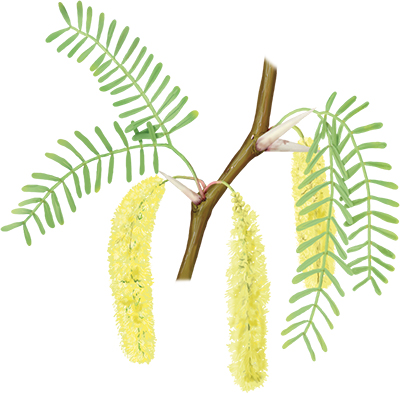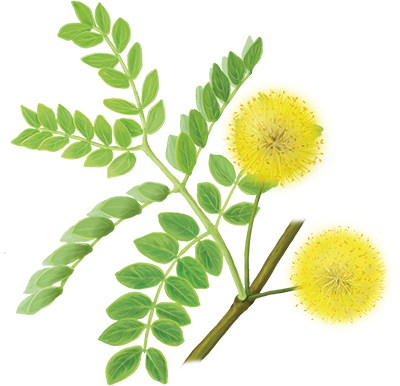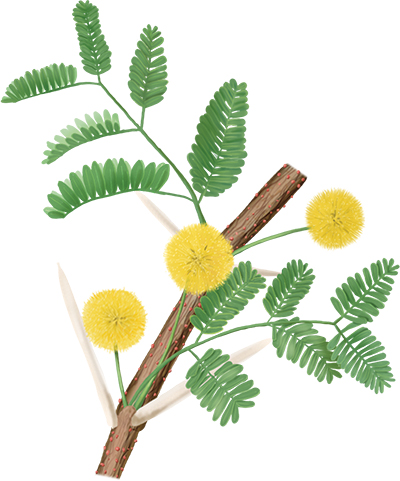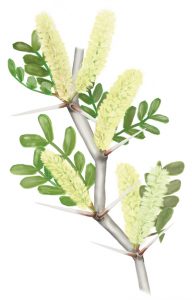Legume Room
Plants in the same family share characteristics just like human relatives do. While handy for classification, those common traits are sometimes so similar among a group with matching flowers that it’s hard to distinguish one from another. This guide to yellow-blooming members of Fabaceae (the pea or legume family) will help you sharpen your tree IDs on these perplexing Texas natives.
ILLUSTRATIONS Samantha N. Peters
HONEY MESQUITE (Prosopis glandulosa)
Shrubby but reaching 25 to 30 feet and as wide or wider than it is tall
Pale to warm yellow wand-shaped flowers from February to September
Large thorns, up to 2 inches long
Pods are a lighter yellowish-brown and slightly flat
Look for: Longer leaflets comprising leaves that resemble those of ferns
GOLDENBALL LEAD TREE (Leucaena retusa)
Small tree reaching 12 to 24 feet
Golden globes, 1 inch in diameter, from April to October (often after rain)
Leaflets that are a bit more round, giving foliage an undeniable cuteness
Flat pods in a rusty shade of brown
Flaky, cinnamon- colored bark on trunk
Telltale trait: No thorns!
HUISACHE (Vachellia farnesiana)
Multibranched tree growing 15 to 20 feet tall
Yellow-orange pompom flowers, 1/2-inch diameter, from January to April
Lots of light-colored, paired spines to 1-1/2 inches long (The common name is from Nahuatl for “many thorns.”)
Dark reddish-brown seedpods
Telltale trait: Fine, feathery foliage — the smallest leaflets of this group
BLACKBRUSH ACACIA (Vachellia rigidula)
Shrub from 6 to 12 feet tall or more, grows in an up-and-out shape (like it’s yelling “hooray!”)
Flowers are paler yellow and spike shaped, occurring in bunches March to June
Bark and thorns are both pale in color and rigid (the latter up to 2 inches long)
Look for: Semi-evergreen leaves that are darker and glossier than the rest of this bunch




